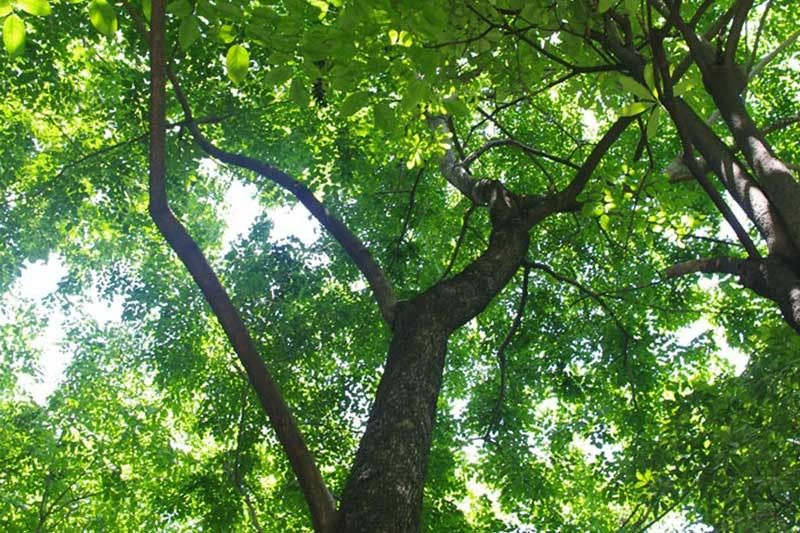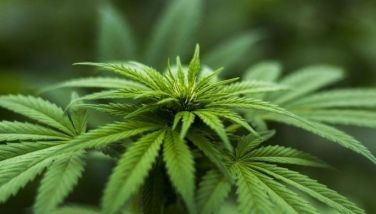Government embarks on ‘genetic diversity’ program on narra

MANILA, Philippines — The government has embarked on a robust “genetic diversity” program of the endangered narra and industrial tree rattan as a commitment to conserve forests amid seemingly irreversible deforestation that threatens economic resources.
The Ecosystems Research & Development Bureau (ERDB) has started carrying out DNA analysis of these economically important tree species as a long term support to the DENR’s national greening program (NGP).
Genetic variation is the basis of evolution and the catalyst for species to adapt to the ever changing environment.
“Assessment of genetic variation among and within populations is essential for the success of any tree breeding and selection programs. It holds vast potentials for the preservation of the forest ecosystems,” said ERDB director Sofio Quintana.
Six provinces – Ilocos Sur, Cebu, Iloilo, Marinduque, Nueva Vizcaya and Quezon—have so far been identified as potential sources of good planting materials for narra reforestation.
“The genetic diversity analysis showed that the six populations of Pterocarpus indicus Wild (narra) from the six provinces have good levels of genetic variation and can serve as good sources of potentially useful genes,” said ERDB genetic experts.
The government has deemed a top priority to conserve forests as a top economic asset as Philippines has among the most biologically diverse flora with five percent of the world’s total.
Narra’s timber is prominent among importers in Asia, Europe, US and Australia which “accept large volumes of sawn timber at high prices of $600 per cubic meter according to the “Species Profiles for Pacific Island Agroforestry.”
Narra is also known for its medicinal, ornamental, and nitrogen-fixing functions.
ERDB’s project, “2018 Genetic Diversity: A Key Component for Conserving Philippine Forest Trees,” aims to identify trees with molecular markers that indicate high survival rate as part of planting the targeted 1.5 billion trees under the NGP.
“With the increase in global average temperatures, some species of forest trees fail to cope with such changes. With more genetic variations, it is more likely that some individuals possess alleles (alternative form of genes) that better suit the environment,” the ERDB said.
Having less genetic diversity leads to uniformity, with population having individuals less likely to adapt and survive in the changing environment.
While monoculture in agriculture is good for harvesting a good volume of a single crop, it will be a problem when a disease or parasites attack the field in the long run.
Little genetic variation within species impedes the process of healthy reproduction as evidenced by the expression of harmful traits in the offspring resulting from inbreeding (mating of genetically related organisms or in human, within one family).
Inbred trees which grow slowly are often deformed and many die suddenly and inexplicably before reaching maturity. Few inbred trees survive and reproduce in natural forest setting.
In 1890, an epidemic had spread across Panama wiping out hectares of banana production. Being genetically identical, banana plants are susceptible to the fungal disease, providing little to no resistance against the disease.
Such scenario ultimately leads to extinction of the population and eventually extinction of the species.
“Knowledge of the extent of genetic diversity in selected narra populations may be used in determining the susceptibility of these narra populations to pests like the ambrosia beetles which are the causative agent of fusarium wilt (Fusarium oxysporum),” the ERDB said.
Forestry experts use molecular markers as part of effective reforestation strategy because of the “ease, rapidity and reliability in producing results.
In order for plant geneticists to distinguish genetic variations, they use segments of DNA (deoxyribonucleic acid) sequence of the individuals to mine them out despite the limited availability of whole genome sequences from forest trees species.
After collecting the plant material (leaf, stem, or root), careful optimization of protocols follows wherein the DNA of the material is isolated. This process is called DNA extraction. The process involves breaking the cell wall and cell membrane (cell lysis), removing the organelles, and destroying the nuclear membrane. After these processes, the “purest” DNA can be extracted.
Having a desirable amount of DNA with superior purity, molecular biologists then subject this DNA to a temperature sensitive process that produces millions of copies of it in a matter of an hour or two. This copying process is called DNA amplification or polymerase chain reaction (PCR) discovered by Nobel Prize winner Kary Mullis in 1985.
It involves a series of heating-cooling-heating the DNA. The temperature changes allow the enzymes and other reagents to copy the target regions (molecular markers) of the DNA.
PCR is an indispensable technique known to be used in medical and clinical laboratory research including forensic science in crime scene investigations.
It also holds a potential swing in improving forensic botany for higher productivity and survivability of forest trees species and for the trees to achieve superiority in growth parameters.
- Latest
























